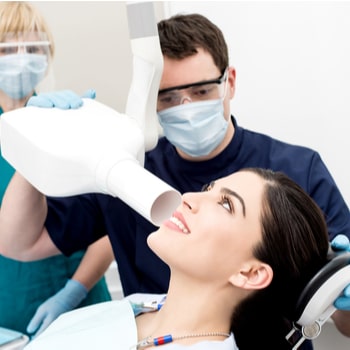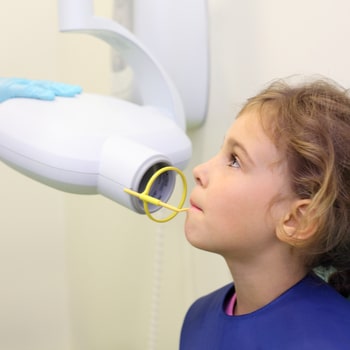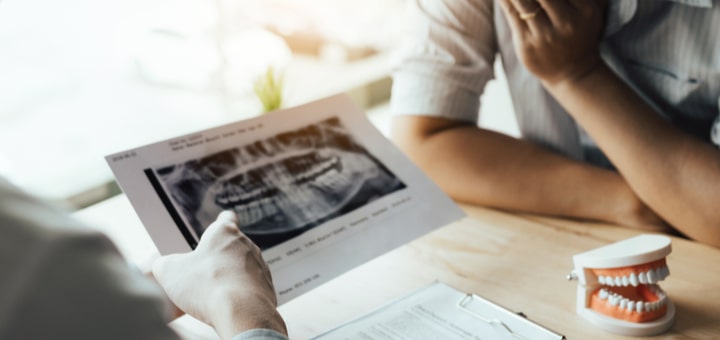Dental X-Rays by Livermore Dentists
Dental X-rays, also known as radiographs, are images taken of your teeth. An x-ray is an energy that is able to pass through soft tissues like gums and absorbed by dense tissue like teeth and bone. Dental X-rays may seem complicated, but they are common tools and just as important as your actual teeth cleaning. Without them, how would your dentist be able to help? They are an essential part of dental care because they allow your dentist to be able to assess your oral health.
Why Dental X-Rays are Performed?
Dental X-rays are usually done once a year, though you might be required to have more if your dentist is keeping track of the progress of a dental problem or treatment. These X-rays are used low levels of radiation in order to capture images the inside of your teeth and gums. X-rays allow dentists to see inside a tooth and beneath the gums to assess the health of the bone and supporting tissues that hold teeth in place. This then helps your dentist diagnose problems such as cavities, decay, impacted wisdom teeth, and various diseases:
- Bone loss
- Infections
- Tumors
- Changes in the root canal
There are many other factors that can determine how often you need to dental X-rays, which include:
- Age
- Current oral health
- Any signs or symptoms of oral disease
- Oral health history (especially for gingivitis)
New patients tend to undergo more dental X-rays so their new dentist can get a clear picture of their dental health. These new X-rays will be important if you don’t have any x-rays from any of your former dentists. Children generally need more dental x-rays taken than adults because their dentists need to keep track of the growth of their incoming adult teeth. This can be important later on because it can help the dentist determine if baby teeth need to be pulled to prevent complications, such as adult teeth growing in behind baby teeth.
Recommended Frequency of Dental X-Rays

The U.S. Food and Drug Administration has guidelines required for performing dental x-rays during a routine dental visit.
- Kids: With no decay and no risk of decay, x-rays of the posterior bitewings are recommended at least every two years.
- Adults: No noticeable decay and no increased risk, x-rays of posterior bitewings every 2-3 years is good enough.
- Kids: Evident clinical decay, or at least an increased chance of developing dental decay, posterior bitewings should be done every 6-12 months.
- Adults: If there is an increased risk of tooth decay, any sort of dental disease, or the patient has an extensive history of dental treatment, posterior bitewings should be taken every 6-18 months.
Are Dental X-Rays safe for children?
Many parents worry about how dental x-rays will affect their children, especially since they are more sensitive to radiation. However, the amount of radiation used in dental x-rays poses no danger. X-rays are important for young patients since their jaws and teeth are constantly changing. X-rays provide a great way to monitor their development. They also help dentists to:
- Make sure there is enough room to accommodate their incoming teeth
- Monitor wisdom teeth development
- Determine if baby teeth are loosening in the right way to make room for new teeth
- Detect any decay and gum disease early
Children should visit the dentist regularly and get x-rays that the dentist recommends.

Dental X-Rays with our Livermore Dentists

At Foothill Dental Care, we are more than willing to talk to you about any concerns you have about x-rays. If it has been over a year since you last saw a dentist, you should definitely make an appointment for a checkup. Regular visits to the dentist can help you prevent any diseases that could be developing. Call (925) 961-5484 now to schedule an appointment at Foothill Dental Care in Livermore, CA.
Dental x-rays are the ideal diagnostic procedure when it comes to dentistry and is considered very safe. Digital dental x-rays have very small doses of radiation, only exposing you to a small amount compared to other imaging procedures. A routine checkup with four bitewing x-rays will expose you to around the same amount of radiation you will experience during one to two hours on an airplane. You can also talk to your dentist and ask them if they can use the lowest radiation setting, especially with children. Leaded coverings are commonly used to protect certain parts of the body from radiation.
Dentists will generally advise pregnant women to avoid dental x-rays. Radiation is minimal, but it is best to avoid any risk of being exposed to protect the health of the developing fetus. This is the reasons it is extremely important to tell your dentist if you are or may be pregnant. There are, however, some cases where pregnant women experience dental emergencies or are in an ongoing treatment plan, so they may still need x-rays. You should talk to your dentist to figure out how you should proceed. Balancing your dental and prenatal health is important, especially since women with periodontal diseases have a higher risk of difficult pregnancy outcomes. Do not neglect your teeth during pregnancy!
Generally, patients will be told to remove any jewelry, especially those near the affected areas. Any earrings, necklaces, or glasses.
